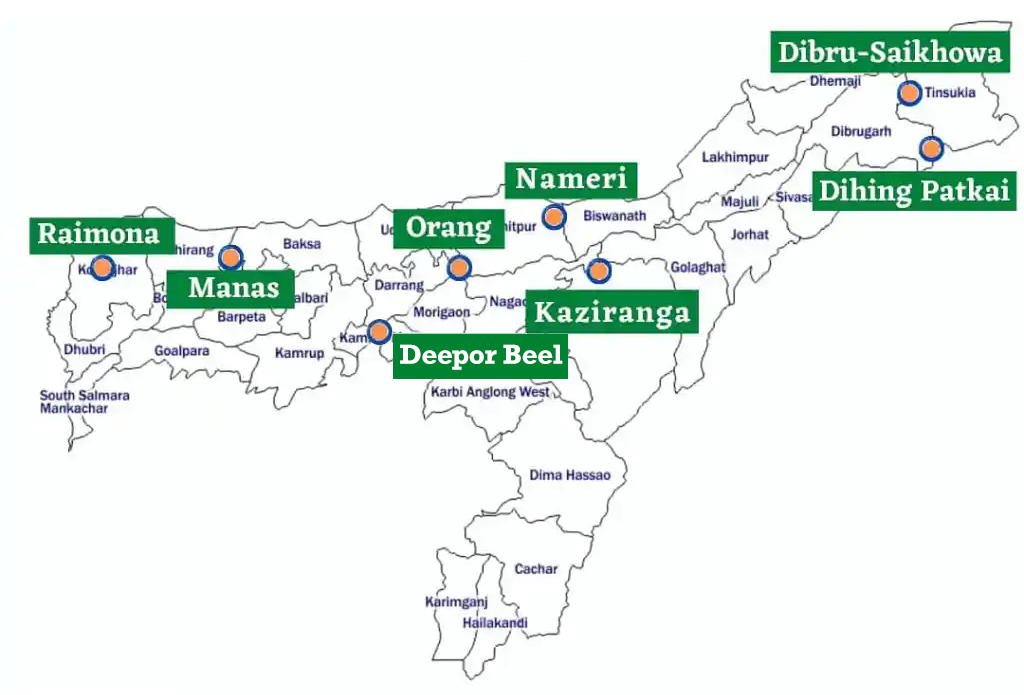Biodiversity & Environment
Deepor Beel: Eco-Sensitive Zone
- 08 Sep 2021
- 4 min read
Why in News
The Ministry of Environment, Forest and Climate Change (MoEFCC) has notified the Eco-sensitive zone of the Deepor Beel Wildlife Sanctuary (Assam).
- Earlier, Kaziranga National Park became the first in the country to use satellite phones and Dehing Patkai and Raimona were designated as National Parks.
Key Points
- Deepor Beel:
- About:
- It is one of the largest freshwater lakes in Assam and the State’s only Ramsar site besides being an Important Bird Area by Birdlife International.
- It is located towards the southwest of Guwahati city, Assam and is the erstwhile water channel of River Brahmaputra.
- The lake expands up to 30 sq. km in summer and reduces to about 10 sq. km in the winter. The wildlife sanctuary measures 4.1 sq. km within this wetland (beel).
- Importance:
- It constitutes a unique habitat for aquatic flora and avian fauna.
- It has both biological and environmental importance besides being the only major storm-water storage basin for Guwahati city.
- It provides a means of livelihood for a number of local families.
- Recently, six young girls from the fishing community from Assam have developed a biodegradable and compostable yoga mat called ‘Moorhen Yoga Mat’.
- Concerns:
- It’s water has become toxic and it has lost many of its aquatic plants that elephants would feed on.
- It has for decades been threatened by a railway track — set to be doubled and electrified — on its southern rim, a garbage dump, and encroachment from human habitation and commercial units.
- About:
- Eco-Sensitive Zone:
- About:
- Eco-Sensitive Zones or Ecologically Fragile Areas are areas within 10 kms around Protected Areas, National Parks and Wildlife Sanctuaries.
- ESZs are notified by MoEFCC, Government of India under Environment Protection Act 1986.
- In case of places with sensitive corridors, connectivity and ecologically important patches, crucial for landscape linkage, even areas beyond 10 km width can also be included in the eco-sensitive zone.
- The basic aim is to regulate certain activities around National Parks and Wildlife Sanctuaries so as to minimise the negative impacts of such activities on the fragile ecosystem encompassing the protected areas.
- Activities:
- Prohibited Activities: Commercial mining, saw mills, industries causing pollution (air, water, soil, noise etc), establishment of major HydroElectric Projects (HEP), commercial use of wood, Tourism activities like hot-air balloons over the National Park, discharge of effluents or any solid waste or production of hazardous substances.
- Regulated Activities: Felling of trees, establishment of hotels and resorts, commercial use of natural water, erection of electrical cables, drastic change of agriculture system, e.g. adoption of heavy technology, pesticides etc, widening of roads.
- Permitted Activities: Ongoing agricultural or horticultural practices, rainwater harvesting, organic farming, use of renewable energy sources, adoption of green technology for all activities.
- About:






-min.jpg)